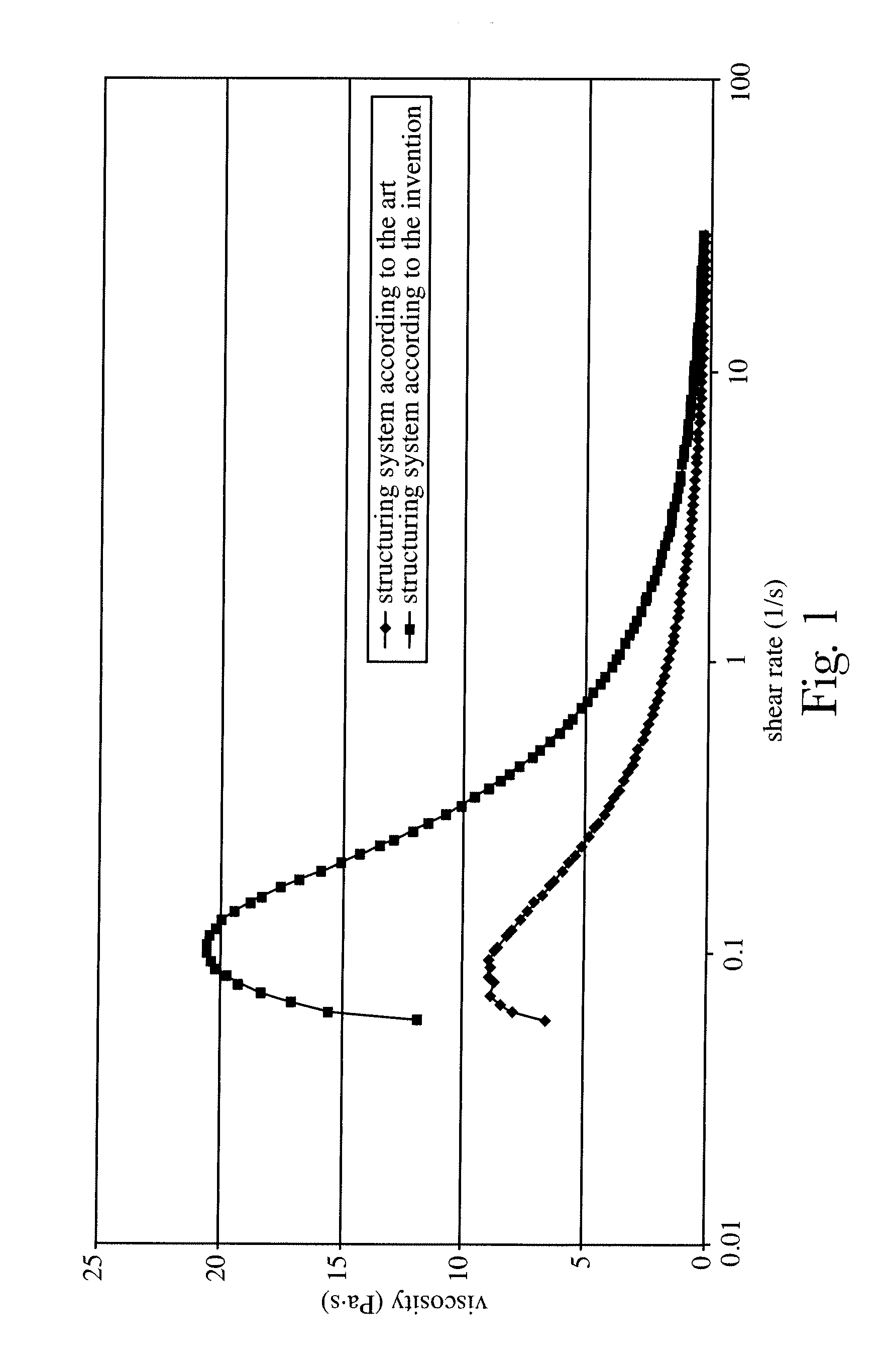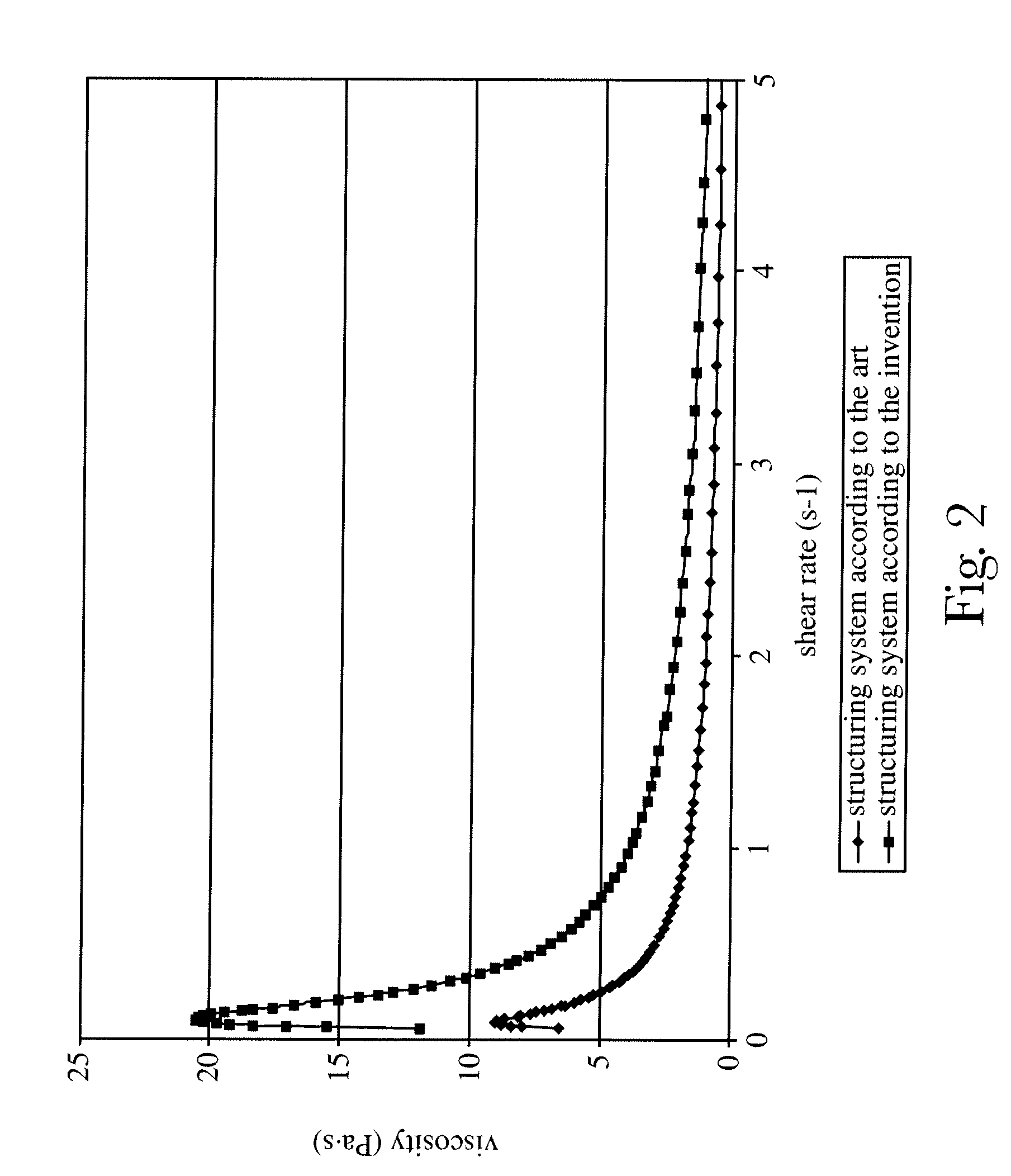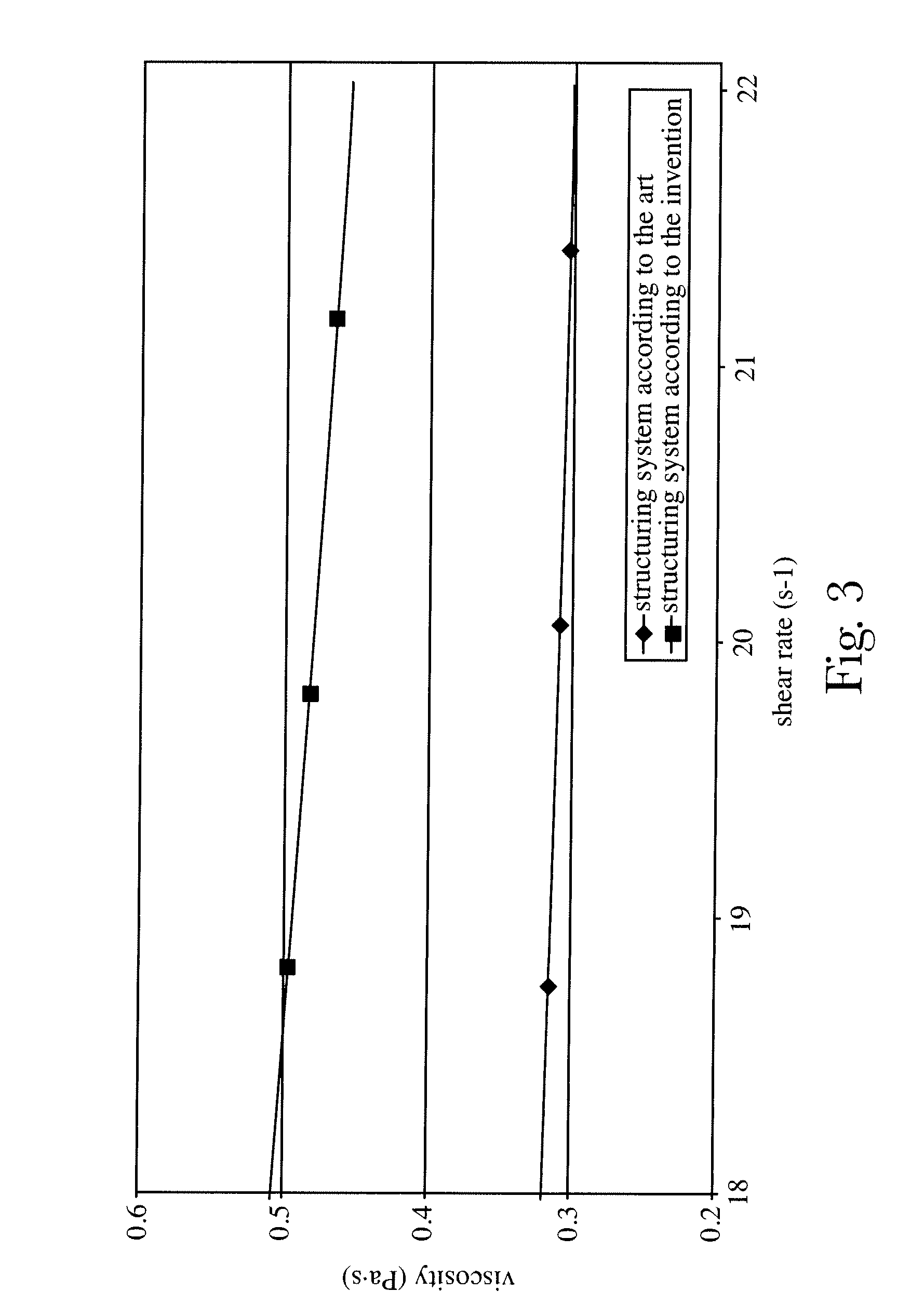External structuring system for liquid laundry detergent composition
a technology of external structure and laundry detergent, which is applied in the direction of detergent compositions, organic/inorganic per-compound compounding agents, and detergent compositions containing appreciable amounts of surfactants, can solve the problems of limiting formulation flexibility, technical difficulties, and difficult formulation of liquid compositions, and achieves improved yield or gel consistency, reduced relative poorly structured levels, and improved structure
- Summary
- Abstract
- Description
- Claims
- Application Information
AI Technical Summary
Benefits of technology
Problems solved by technology
Method used
Image
Examples
Embodiment Construction
[0018]As used herein, the term “external structuring system” or ESS refers to a selected compound or mixture of compounds which provide structure to a detergent composition independently from, or extrinsic from, any structuring effect of the detersive surfactants of the composition. Structuring benefits include arriving at yield stresses suitable for suspending particles having a wide range of sizes and densities. ESS of use may have chemical identities set out in detail hereinafter.
[0019]To be noted, the present ESS make use of currently known individual raw materials. No new chemical entities, .i.e., new chemical compounds, are produced. The invention relates to physical form modifications of the size and / or crystal habit of known chemical entities such as hydrogenated castor oil, and to processes associated therewith. Indeed, the avoidance of new chemical materials is one further advantage of the present invention.
[0020]Without wishing to be bound by theory, many external structu...
PUM
| Property | Measurement | Unit |
|---|---|---|
| melting temperature | aaaaa | aaaaa |
| needle radius | aaaaa | aaaaa |
| temperature | aaaaa | aaaaa |
Abstract
Description
Claims
Application Information
 Login to View More
Login to View More - R&D
- Intellectual Property
- Life Sciences
- Materials
- Tech Scout
- Unparalleled Data Quality
- Higher Quality Content
- 60% Fewer Hallucinations
Browse by: Latest US Patents, China's latest patents, Technical Efficacy Thesaurus, Application Domain, Technology Topic, Popular Technical Reports.
© 2025 PatSnap. All rights reserved.Legal|Privacy policy|Modern Slavery Act Transparency Statement|Sitemap|About US| Contact US: help@patsnap.com



